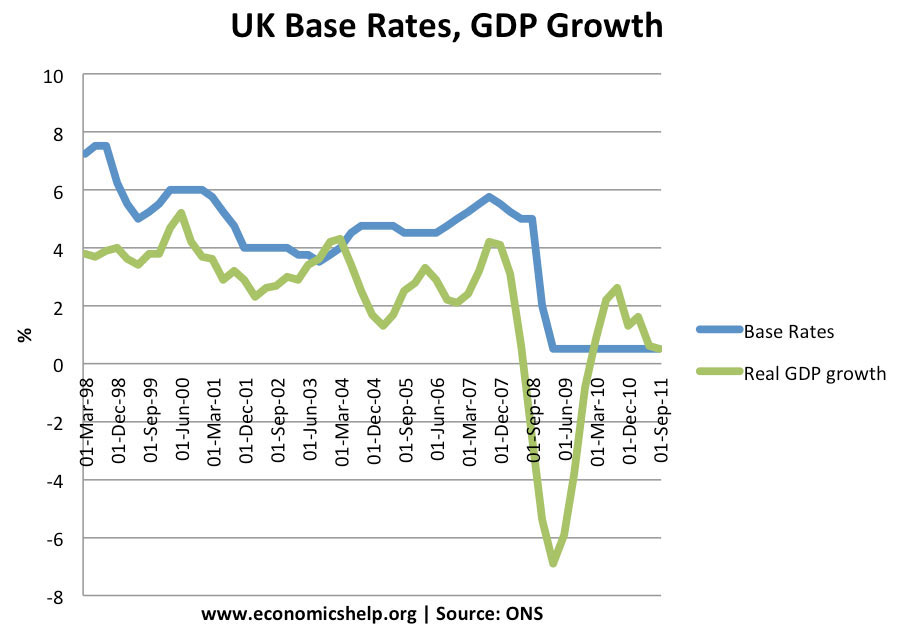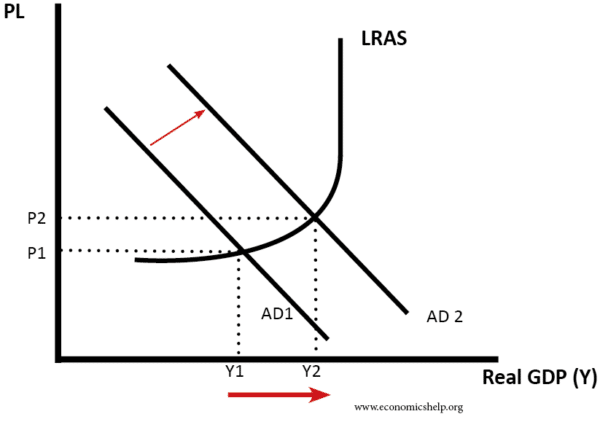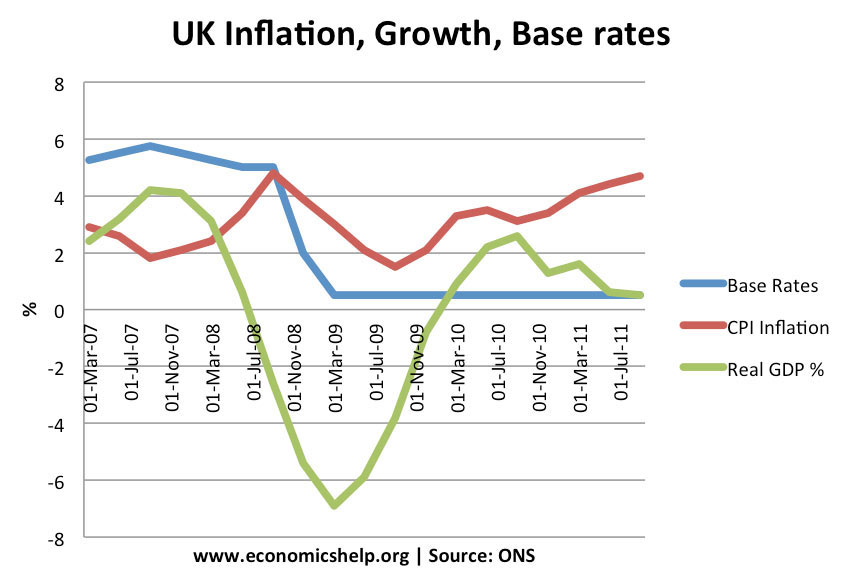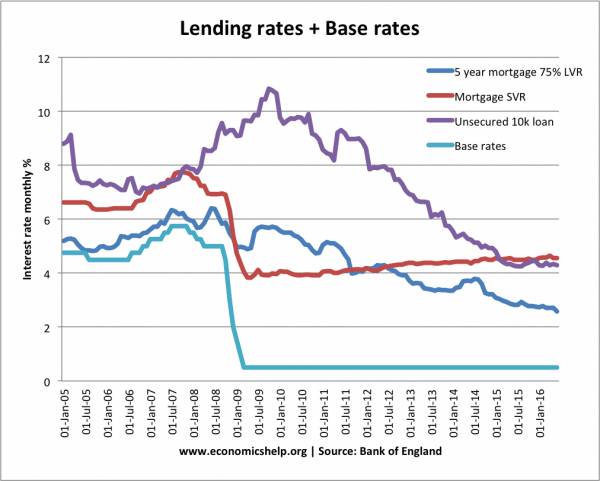

The MPC of the Bank of England has an inflation target of 2% +/-1. They also consider other economic objectives such as economic growth and unemployment. If inflation is forecast to fall below the target, they can consider loosening monetary policy to target higher inflation and enable a higher rate of economic growth.
Also, if the economy is forecast to enter into a recession, they are likely to cut interest rates and try to boost economic growth.
In some cases, they may pursue expansionary monetary policy, even if inflation is above target – if they think inflation is temporary and there is a greater risk of recession. (see: cost-push inflation)
If the Bank of England cuts interest rates, it will tend to increase overall demand in the economy.
In addition to cutting interest rates, the Central Bank could pursue a policy of quantitative easing to increase the money supply and reduce long-term interest rates.Under quantitative easing, the Central bank creates money. It then uses this created money to buy government bonds from commercial banks. In theory, this should:


In theory, expansionary monetary policy should cause higher economic growth and lower unemployment. It will also cause a higher rate of inflation. To some extent, the expansionary monetary policy of 2008, helped economic recovery. But, the recovery was weaker than expected showing limitations of monetary policy.
Cutting interest rates isn’t guaranteed to cause a strong economic recovery. Expansionary monetary policy may fail under certain conditions.

The recession of 2008-2009 was very deep. The UK was hard hit by the credit crunch and knock to the financial sector. Despite interest rate cut and £200bn of quantitative easing, the economy was quite slow to recover. In 2011, this weak recovery petered out.
However, without the expansionary monetary policy, the recession could have been even deeper. Also, the double-dip recession of 2011-2012 was partly caused by a tightening of fiscal policy (higher tax, lower spending)
Related
Fiscal tightening has involved cut backs in public sector spending. Public sector spending is added into GDP at cost. If the value of marginal spending is less than cost then GDP (in real terms) will be artificially inflated by the accounting method. If that is so, then In order to re-allocate resources to more productive uses it will be necessary to reduce public sector spending…that will reduce GDP (but by more the the loss of output value). It will mean resources are idle but eventually the economy will (I hope) use the resources freed up more productively. That may be a slow process; the state of the economy is not helpful and many of the unemployed will be in areas with poor short/medium term prospects.